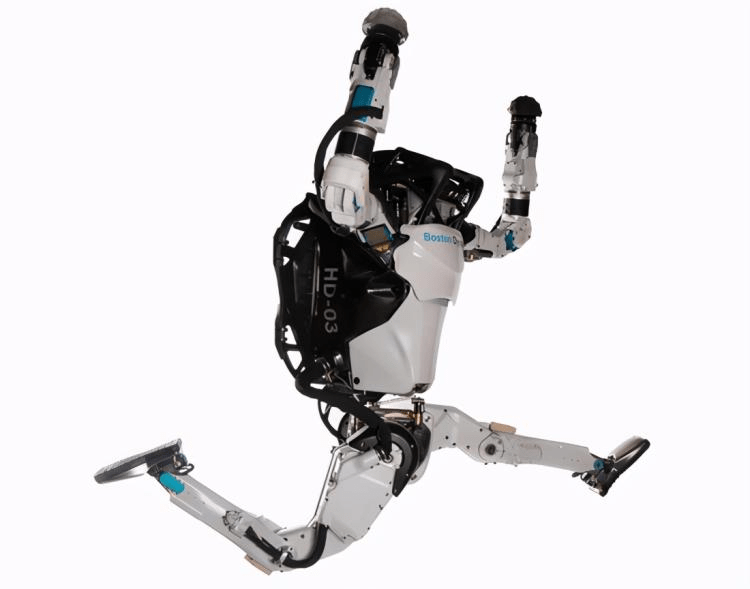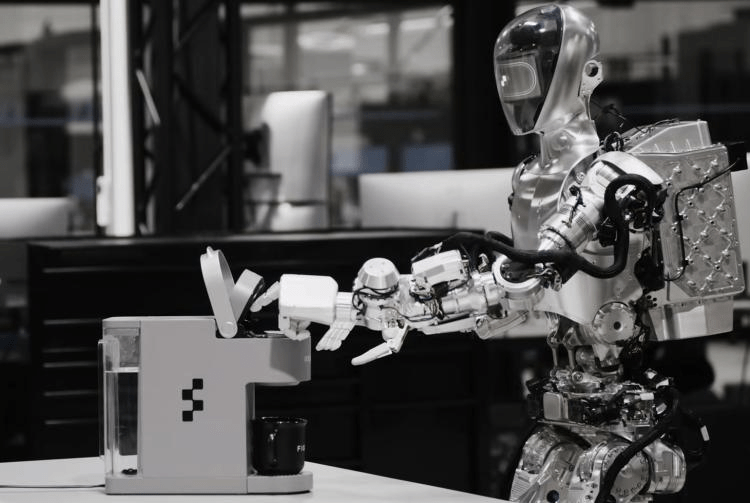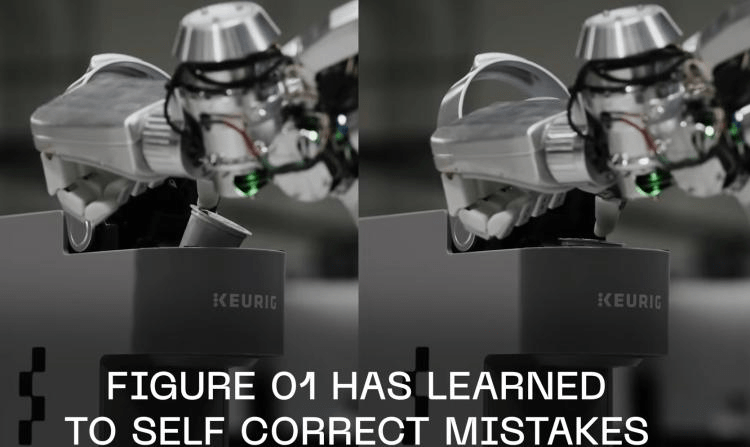The OpenAI guys are “replicating” an OpenAI in the field of robotics, which is getting hot again this year because of AI.
On February 23, 2024, OpenAI, Microsoft, Bezos Ventures, NVIDIA, and 18 other investors injected $675 million into a robotics company called Figure AI.
Figure AI was founded in 2022, and in less than two years after three rounds of investment, it’s pretty much assembled a collection of the biggest names in Silicon Valley’s tech scene that have heads on their shoulders. Moreover, the more you study this company, the more you will find that this company and OpenAI back then were simply the same recipe ah.
Figure’s own Altman+Ilya combination
Figure AI is working on general-purpose humanoid robots. The core technology of this company comes from its CTO, Jerry Pratt. He has been working on robotics since 1998 and, until today, the direction of his research has never changed, it has always been balance and contact (coupling) in bipedal robots.
For example, back in 2016, Jerry published the paper Walking on Partial Footholds Including Line Contacts with the Humanoid Robot Atlas. The central idea of this paper was to propose a method to allow the humanoid robot to walk with restricted footholds.
The advantage of this algorithm is that it does not require prior information about footholds, and it also utilizes information about expected footholds to improve the effectiveness of the step. After the robot takes a step, it tries to change the center of pressure position around the edge of the foot as a way to explore new contact surfaces. The available foothold area is inferred from the way the foot rotates around the contact edge during exploration, and the actual center of pressure position reached. This estimated resulting contact area is then utilized by a whole-body momentum-based control algorithm. To walk and maintain balance on incomplete footholds, the algorithm combines fast dynamic strides with the use of upper body angular momentum to restore balance.
Then you should know from the title of this paper that this algorithm is the core algorithm utilized by the Boston Robotics Atlas, which is on fire out of the ring. If it weren’t for Jerry’s algorithm, Atlas wouldn’t be running and flipping like a rabbit. If you follow the Japanese style, then Jerry called a bipedal robot immortal is not too much.
In fact, until 2021, the concept of collaborative robots (co-robot) before the fire, bipedal robots in the field of robotics is a very “alternative” field. Because robots are different from us humans, the pursuit of balance in humans, can only consider the feet, and physical dysfunction will only consider the hands and knees. But the robot is not the same, the sense of balance of the biped is difficult to control, then do not use the biped, instead of three-footed, four-footed, eight-footed, wheels, crawlers, and then simply give him an imbalance to take the screws pressed to the ground. That’s how the multi-axis robotic arm we know today came to be.
But as collaborative robots have become increasingly popular, the scholars of these bipedal robots, the precursors to humanoid robots, have become a gold mine. And Jerry, once active in IEEE, is certainly the hottest when it comes to capital.
By contrast, Brett Adcock, CEO of Figure AI Brett Adcock has little academic success and is a businessman with a strong ability to cash in. In 2018 he and his sidekick Adam Goldstein founded Archer Aviation, an electric airplane company. In August 2022, United Airlines paid Archer Aviation a $10 million deposit for 100 electric flying cabs. And with that order, Brett landed the company directly on the New York Stock Exchange.
Does the combination of Jerry and Brett look familiar to those of you who follow OpenAI? Let’s take away the name and say that there is a technology that was once very obscure, but is very suitable for the current environment, together with a businessman who has a strong ability to realize the technology and has a proud track record, and the key is that this company is funded by Microsoft.
This is OpenAI, Brett’s counterpart to Ultraman, except that Jerry’s counterpart is not Sutcliffe, but Sinton.
The Robot with the Strongest Big Model Flavor
Enough about staffing, let’s talk about the product.
Back on January 5th, 2024, Figure AI released a video about their use of generative AI to train Figure AI’s robot, Figure 01, to add capsule coffee to a capsule coffee machine. In the video, the developer requests to Figure 01 from the sidelines, saying to Figure 01, “Can you make me a cup of coffee?” Figure 01 opens the lid of the coffee maker and adds the coffee capsules. It would be fine if it was just a matter of picking up the coffee capsule and putting it into the coffee maker, but the point is that if Figure 01 realizes that the coffee capsule is not in the right place, he also reaches out to set the capsule in the right place.
The unique coupling capabilities of collaborative robots are dramatized in this demonstration.
Unlike traditional industrial robots, collaborative robots do not need to be installed in a closed security enclosure, but can work closely with their environment without physical isolation. In other words, collaborative robots are not developed to do one thing, but they are developed to do one thing with ease.
The strength of Figure 01’s technology is that it understands commands using generative artificial intelligence, which converts natural language into tokens, and then processes the tokens to fulfill the orders that have been assigned to it. According to this company, they have partnered with OpenAI to develop generative AI technology for humanoid robots.
But Figure AI’s biggest headache at the moment also comes from generative AI. As we said earlier, the way Figure 01 understands commands is the token that corresponds to the command, but according to the existing large language model, there is no way to ensure that the output of the token from the generative AI is consistent and stable during a long period and during the process of switching between multiple tasks. In other words, if Figure 01 keeps repeating the same command, even if it has repeated the action countless times, it will definitely make a mistake at some point, and this is the “Shakespearean Monkey” theory.
It’s not the financing that comes together, it’s the …..
Now that we understand the company’s core people and business, we can look back at Figure AI’s investment and realize that it doesn’t smell right.
Figure AI was founded in 2022, and this funding is the third for this company. An amazing thing though is that this company, which has only gone through three rounds of funding, has a whopping 28 investors in it. And this company’s funding wasn’t a full three rounds, the middle round was an additional investment from Intel and Big Sky Partners. So in fact, Figure AI has only experienced two rounds of investment.
Regular investment friends understand that generally speaking, the enterprise financing this matter, unless there are a lot of relatives and friends, and only in this case will there be the kind of drag family gathered a large number of individual investors, or else the first few rounds will seldom appear to appear a large number of investors. In the first few rounds of financing, the number of investors is generally more limited, mainly because of the high risk, valuation uncertainty, information asymmetry, and other factors caused by the cautious investment attitude, as well as the needs of the startups themselves and the constraints of the real conditions. Because the first few rounds of financing are relatively small, the pool of qualified investors to match this scale of investment is itself limited. And whenever financing is required to deal with a large number of investors’ due diligence, legal documents, and share registration, which is very time-consuming and labor-intensive, for early-stage entrepreneurs, too much wasted energy on these things will seriously affect the company’s development. Brett should be light on his feet in this regard, and it’s unlikely that he’ll make a mistake.
And even if there are a lot of investors, as mentioned at the beginning of the article, the shareholders of Figure AI are not only large in number, but their curiosity is also terribly big. When these bigwigs roar, the earth will tremble.
This only shows one thing, that is, these huge amounts of capital injection, not “investment”, but “orders”.
The Robotics industry is very special, it is an extremely complex interdisciplinary. Upstream there are metals, rare earth, and energy, midstream there are precision parts, optical parts, software, chips, and downstream humanoid robots most representative of logistics, service, and exploration. These investors, by way of investors, place orders to Figure AI. And then through the order to reach the robot’s upper middle and lower reaches of the robot.
This is an industry that requires greater resource integration than the AI space, and today Figure’s Brett looks to have been handpicked by the big boys as the next Altman-type figure. A new OpenAI-style story is coming.





